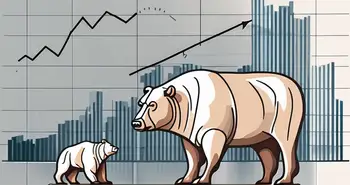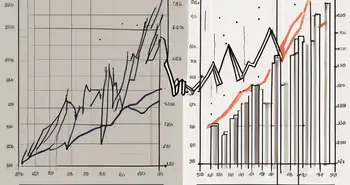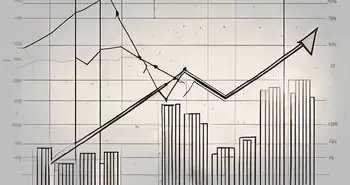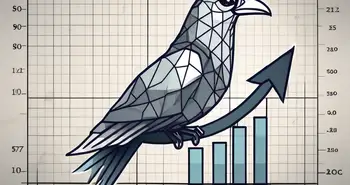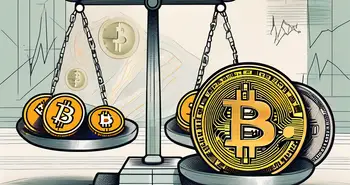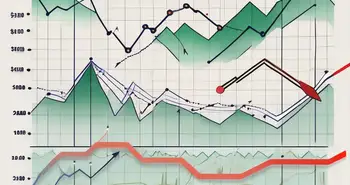Options Explained: In the Money vs. Out of the Money Essentials
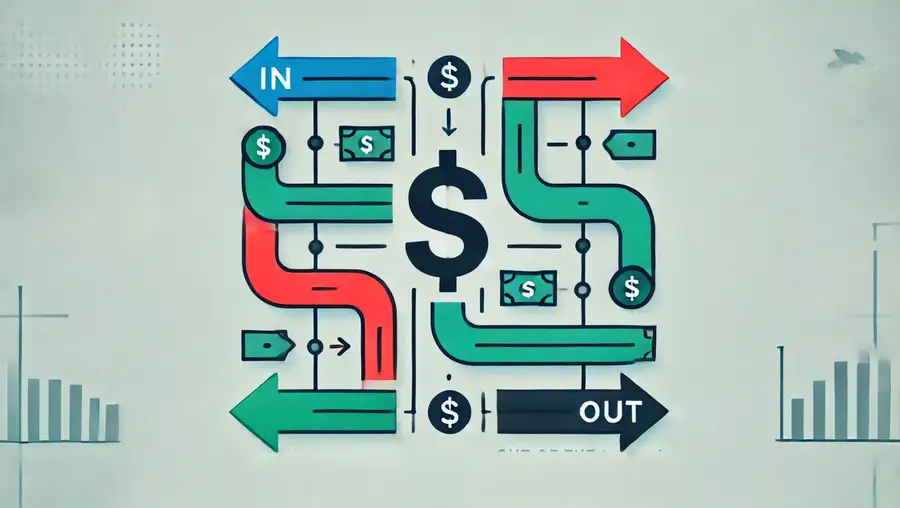
In the world of options trading, understanding the difference between being “in the money” and “out of the money” is crucial. These terms refer to the relationship between the current price of the underlying asset and the strike price of an option. Whether you're a beginner or an experienced trader, gaining a clear understanding of this concept will help you make more informed investment decisions.
Defining Key Terms: In the Money and Out of the Money
What Does ‘In the Money' Mean?
When an option is considered “in the money,” it means that the option has intrinsic value. In other words, if you were to exercise the option immediately, you would make a profit because the option's strike price is below the current market price of the underlying asset for call options, or above the current market price for put options.
To illustrate this, let's say you purchase a call option for XYZ stock with a strike price of $50 when the stock is currently trading at $55 per share. In this case, your option is considered in the money, as you have the right to buy the stock at a lower price ($50) and immediately sell it at a higher price ($55), resulting in a profit.
What Does ‘Out of the Money' Mean?
Conversely, an option is considered “out of the money” when it holds no intrinsic value. This means that if you were to exercise the option immediately, you would incur a loss because the option's strike price is higher than the current market price for call options, or below the current market price for put options.
Let's take the same example as before but reverse the scenario. If you purchase a call option for XYZ stock with a strike price of $60 when the stock is currently trading at $55 per share, your option is now considered out of the money. Since the current market price is below the strike price, exercising the option would result in a loss.
The Importance of Moneyness in Options Trading
Now that we understand the basic definitions of in the money and out of the money options, let's explore why moneyness is so important in options trading.
How Moneyness Affects Option Pricing
The moneyness of an option significantly impacts its price. In-the-money options have higher premiums compared to out-of-the-money options, as they possess intrinsic value. Traders are willing to pay more for in-the-money options because they offer greater profit potential.
On the other hand, out-of-the-money options have lower premiums. Since they only hold time value, there is no immediate profit potential. As a result, traders are generally not willing to pay as much for these options.
The Role of Moneyness in Risk Management
Moneyness also plays a crucial role in risk management. In general, being in the money reduces the risk of losing the entire investment. When you purchase an in-the-money option, even if the market moves against you, there is still a chance to recoup at least a portion of your investment by exercising the option. Out-of-the-money options, however, carry a higher risk as the investment can potentially become worthless if the market does not move in the desired direction.
Expert Tip: I remember a time when I was considering buying out-of-the-money options as a speculative play. The stock surprised me with an unexpected announcement, and I found out the hard way that out-of-the-money options can quickly become worthless if the market doesn't move in your favor. It was a valuable lesson that emphasized the importance of understanding moneyness and considering risk management strategies when trading options.
In the Money vs. Out of the Money: A Comparative Analysis
Profit Potential and Risk
One of the key differences between in the money and out of the money options is the profit potential and risk involved. In-the-money options offer greater profit potential since they already have intrinsic value. This means that the option holder can immediately capture a profit by exercising the option.
Out-of-the-money options, on the other hand, have lower profit potential as they only hold time value. The option holder can only make a profit if the market moves favorably to bring the option in the money. These options also carry higher risk, as there is a higher likelihood of the investment becoming worthless.
Impact on Trading Strategies
The difference between in the money and out of the money options also influences trading strategies. In-the-money options are often used for strategies like covered call writing or protective puts, where investors are looking to generate income or protect their existing positions.
Out-of-the-money options, on the other hand, are commonly utilized for speculative strategies like buying call or put options with the expectation of a significant price movement in the underlying asset. These strategies offer the potential for substantial returns, but they also come with higher levels of risk and uncertainty.
Factors Influencing In the Money and Out of the Money Status
Underlying Asset Price Movements
The primary factor determining whether an option is in the money or out of the money is the price movement of the underlying asset. For call options, the stock price must be greater than the strike price to be considered in the money. For put options, the stock price must be lower than the strike price. As the underlying asset price fluctuates, the moneyness status of the option may change.
Time Decay and Volatility
Time decay and volatility also play a role in determining the moneyness of an option. As options approach their expiration date, the time value portion diminishes. Out-of-the-money options are more susceptible to time decay, as their chances of becoming in the money decrease as expiration approaches.
Volatility, on the other hand, can impact both in the money and out of the money options. Higher volatility can increase the chances of out-of-the-money options becoming in the money, while reducing the chances of in-the-money options falling out of the money.
Making Informed Trading Decisions
Assessing Your Risk Tolerance
When it comes to trading options, it is essential to assess your risk tolerance. In the money and out of the money options carry different levels of risk, and understanding how much risk you are comfortable with is crucial.
If you have a low appetite for risk and prefer more conservative strategies, focusing on in-the-money options may be a better fit for you. These options offer a higher probability of profit but also come with higher upfront costs.
On the other hand, if you are comfortable with higher risk and potential losses, out-of-the-money options may be a viable option. These options can provide significant returns if the underlying asset makes a substantial move in the desired direction.
Choosing the Right Option Based on Moneyness
When selecting options, it's crucial to consider moneyness based on your trading strategy and market outlook. If you believe the underlying asset will experience a significant price increase, in-the-money call options might be suitable. Conversely, if you anticipate a significant price drop, out-of-the-money put options could be considered.
However, keep in mind that selecting options solely based on moneyness is not enough. Take into account other factors such as implied volatility, time decay, and fundamental analysis to make a well-informed decision.
FAQs
What does it mean to exercise an option?
Exercising an option refers to the process of utilizing the right granted by an option contract to buy (for call options) or sell (for put options) the underlying asset at the predetermined price (strike price). It is important to note that options do not require exercising; they can also be sold or allowed to expire worthless.
Can out-of-the-money options become in the money?
Yes, out-of-the-money options can potentially become in the money if the price of the underlying asset moves favorably before the option's expiration date. However, it's essential to recognize that the chances of this happening decrease as time passes, due to time decay and other factors.
Which is better, in the money or out of the money options?
The choice between in the money and out of the money options depends on your trading strategy, risk tolerance, and market outlook. In-the-money options offer a higher probability of profit but also come with higher upfront costs. Out-of-the-money options carry higher risk but can provide substantial returns if the market moves in your favor.
Why is it important to consider moneyness in options trading?
Moneyness is crucial in options trading because it directly impacts the profit potential and risk of an option. By understanding whether an option is in the money or out of the money, traders can make more informed decisions about which options to buy or sell. Moneyness also plays a significant role in determining the strategy to be employed, as different moneyness statuses affect the options' pricing and potential outcomes.
As an expert options trader, I cannot stress enough the significance of understanding the difference between in the money and out of the money options. By mastering these concepts and considering moneyness in your trading strategy, you can enhance your chances of success and mitigate unnecessary risks.
Ready to put your understanding of in the money and out of the money options into action? Join Morpher, the innovative trading platform that revolutionizes investing with blockchain technology. Experience zero fees, infinite liquidity, and the flexibility of fractional investing and short selling across a variety of asset classes. Embrace the safety of the Morpher Wallet, amplify your trades with up to 10x leverage, and dive into a unique trading experience with Virtual Futures. Sign Up and Get Your Free Sign Up Bonus today to start trading on a platform that's as advanced as your strategies.

Disclaimer: All investments involve risk, and the past performance of a security, industry, sector, market, financial product, trading strategy, or individual’s trading does not guarantee future results or returns. Investors are fully responsible for any investment decisions they make. Such decisions should be based solely on an evaluation of their financial circumstances, investment objectives, risk tolerance, and liquidity needs. This post does not constitute investment advice.

Painless trading for everyone
Hundreds of markets all in one place - Apple, Bitcoin, Gold, Watches, NFTs, Sneakers and so much more.

Painless trading for everyone
Hundreds of markets all in one place - Apple, Bitcoin, Gold, Watches, NFTs, Sneakers and so much more.


